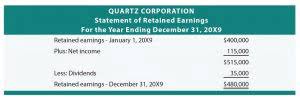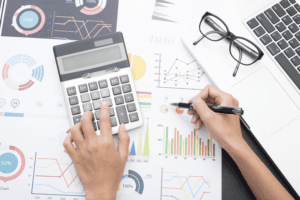FRB: Z 1 Release Financial Accounts of the United States Current Release
Because of this, managers have some ability to game the numbers to look more favorable. Pay attention to the balance sheet's footnotes in order to determine which systems are being used in their accounting and to look out for red flags. In general, buyers interested in your business will also want to see the last three years of financials, so it’s important to understand how to prepare them before listing your business. Generally speaking, a classified balance sheet will be more useful in almost every scenario.
- Therefore, the above steps are essential to prepare a classified balance sheet complete the process so that it can be used by the management and other stakeholders for analysis and investment decisions.
- Current assets are like the cash in your wallet or the snacks in your backpack.
- Such details in the classified balance sheet format help in getting a good breakup of the assets, liabilities and equity related information and understand the cash flow situation well.
- For example, rather than including one “assets” category, a classified balance sheet may break down assets into current and fixed assets.
- The difference between a classified balance sheet and a balance sheet is that a classified balance sheet separates a company's assets and liabilities into different categories.
- A common stock dividend distributable is shown in the shareholders' equity area of the balance sheet, and a cash dividend distributable is shown in the liabilities section.
- This allows investors, creditors, and other interested parties to quickly see how much debt the company has its liquidity position and the value of its assets.
Importance of Classifying Assets and Liabilities
The above are some basic differences between the two categories of balance sheet. At Taxfyle, we connect small businesses with licensed, experienced CPAs or EAs in the US. We handle the hard part of finding the right tax professional by matching you with a Pro who has the right experience to meet your unique needs and will manage your bookkeeping and file taxes for you. However, if a balance sheet is scattered information, you cannot extract the required information.

What Is a Classified Balance Sheet, and Do You Need One for Your Business?
Beyond her corporate achievements, Sadaf is also a revered educator, blending theoretical and practical insights to shape the future of financial analysts and consultants. With credentials like a Master's Degree in Finance and Economics and a title of CSP, she's a force in financial analysis, business planning, and more. Dive into Sadaf's world and discover a blend of knowledge, expertise, and transformative leadership. This financial document acts as a roadmap, delineating the temporal scopes within which various financial elements impact the company. This temporal categorization facilitates a nuanced analysis of the company’s financial strategy. Let us understand the concept of sample classified balance sheet with the help of some suitable examples.
Startup Financial Model
Creating a functional and easily managed classified balance sheet begins with your software. The more customizable and configurable your technology, the more you can aggregate the data into classifications for management. Additionally, make sure https://www.bookstime.com/ the chart of accounts is flexible, letting you group and manage accounts to fit your individual needs. You’ll see that the unchanging assets you’d typically have in an office setting, or even a workshop, can be classified and tracked here.

Classifying Liabilities and Equity on a Balance Sheet
The critical point is they have to be settled fast and are not kept for later payments. Examples of current liabilities include accounts payable, accrued liabilities, current portion of long term debt (CPLTD), deferred revenue, etc. A classified balance sheet is important because it provides a snapshot of a company's financial position. This information can be used by investors, creditors, and other interested parties to make informed decisions about whether to invest in or lend to the company. The structured presentation of financial elements in this type of sheet enables more in-depth financial analysis.
Industry Comparison
For the past 52 years, Harold Averkamp (CPA, MBA) hasworked as an accounting supervisor, manager, consultant, university instructor, and innovator in teaching accounting online. For the past 52 years, Harold Averkamp (CPA, MBA) has worked as an accounting supervisor, manager, consultant, university instructor, and innovator in teaching accounting online. Paul Boyce is an economics editor with over 10 years experience in the industry. Currently working as a consultant within the financial services sector, Paul is the CEO and chief editor of BoyceWire.
If the company has a lot of retained earnings, it means it's doing well and saving money for new projects or tough times. If it's paying out a lot of dividends, it means the owners are getting a good return on their investment. In short, a classified balance sheet is a useful tool for anyone trying to understand a company's financial strength and potential for future success.
- Current liabilities include all debts that will become due in the current period.
- Don’t hesitate to reach out—we’re here to make your financial journey smoother and more insightful.
- The classified balance sheet is the most detailed among all types of balance sheets.
- The critical point is they have to be settled fast and are not kept for later payments.
- The owner/officer debt section simply includes the loans from the shareholders, partners, or officers of the company.
An important characteristic is that they can be easily liquidated to generate cash, which helps a business meet any short-term liquidity crunches. Although they vary from industry to industry, some common examples can be cash, cash equivalents, Inventory, accounts receivable, etc. Creditors (people who lend money) and investors (people who buy parts of companies) can see how easily a company can turn its assets into cash to pay off debts. Besides, it is also hard to identify different items relating to varying classifications. For example, you can take totals of current assets and current liabilities in the classified balance sheet to calculate the current ratio.
- Examples of long term liability can be corporate bonds, mortgages, pension liabilities, deferred income taxes, etc.
- The only difference between a classified and unclassified balance sheet is that a classified balance sheet “classifies” assets, liabilities, and equity into more specific categories.
- Keep in mind a portion of these long-term notes will be due in the next 12 months.
- Now, as the CEO of Oak Business Consultant, her leadership has driven the firm to unparalleled heights, marking it as a benchmark for excellence and innovation.
- To sum up, a classified balance sheet aims to report the company’s assets and liabilities in as detailed a manner as possible.
- Longer-term debt obligations have a full repayment period of more than a year.
- It’s a powerful tool that provides insights into a company’s financial health, guiding decisions for investors, management, and other stakeholders.
Classified Balance Sheet: Definition, Components & Examples

There are a few common components that investors are likely to come across. Balance sheets should also be compared with those of other businesses in the same industry since different industries have unique approaches to financing. If you’re ready to sell your business, or you’re a classified balance sheet just curious about the process, contact us today. It all depends on who generates the balance sheet, and who the target audience is. Increase your desired income on your desired schedule by using Taxfyle’s platform to pick up tax filing, consultation, and bookkeeping jobs.


